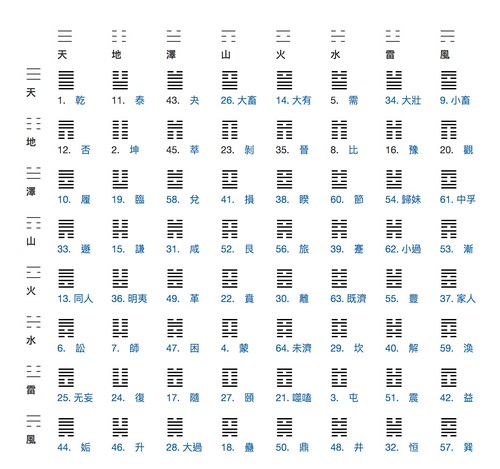1.Final Presentation
"I-Ching Master" is an oracle deck I created, where the querent uses their own sketch instead of flipping coins to get I-Ching hexagon results that tells their fortune or gives suggestion about their concerns.
The demo could be accessed at https://tongwu226.github.io/I-ChingRead/
2. Inspiration & Methodology

Traditional I-Ching divination consists of 64 hexagrams, composed of six stacked horizontal lines, where each line is either Yang or Yin decided by throwing three coins together for six times.
Literomancy is a form of fortune telling widely practiced in Chinese-speaking communities, where the querent asks the reader a question or tells a concern, then writes down a Chinese character. The reader tells the fortune or gives prediction on how to solve a question based on analyzing each single part of the character, or by adding strokes to or subtracking strokes from the original character to indicate potential change.
My oracle deck was just a clean, black box mimicing Fu, an important tool which is the symbol of Daoism practice, on which Daoist practitioners draw the incantation and make it function as summons or instructions to deities, spirits. An individual who participates in my divination practice could think about his/her concerns in mind, and then freely draws on the black canvas. The "Erase" button could clear the canvas if the participant is not satisfied with the drawing. Once done, he or she could press the "divination" button, which then generates four hexagram results from I-Ching based on the drawing. And the "read" button would generate content that explains what each hexagram result means, based on the traditional interpretation of I-Ching.
3. The Algorithm Behind

The algorithm behind this prototype is based on calculating the proportion of the pixels actually being painted in four different sections of the canvas, and mapping each of the four outcomes generated by the sketch to 16 hexagon results. Therefore, each drawing could generate four random results from 64 possible hexagon results.